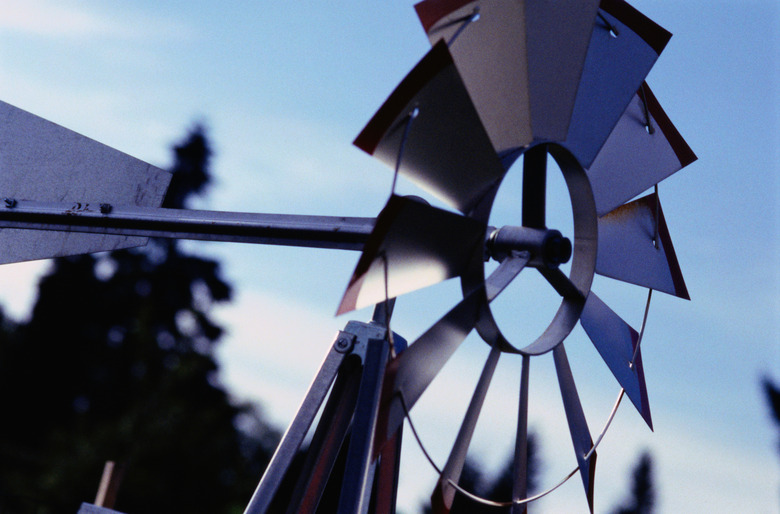How To Build A Homemade Radiometer
Sir William Crookes developed the radiometer in 1873 when he was studying infrared radiation. He believed that the reason the vanes in the radiometer turned was because of pressure from light on the shiny surfaces. Various other theories were developed to explain the movement of the vanes, but the correct answer was first provided by Osborne Reynolds in 1987. The temperature difference on the two sides of the vanes stimulates gas to move from the cold side to the warm side. Molecules move faster on the warmer side, and those striking the edges of the vane push it toward the cooler side, causing the gas on the cooler side to move toward the warmer side.
Step 1
Color the paper side of a silver gum wrapper black, using a marking pen. Let it dry briefly, then cut it into four pieces. Smooth out the four pieces as flat and wrinkle-free as you can.
Step 2
Put a dot of super glue on one side of the match and spread it with a tooth pick. Attach the edge of one piece of gum wrapper to that side, so that it sticks out like a flag. Attach the remaining pieces of gum wrapper to the remaining sides of the match, with the shiny sides all facing in the same direction.
Step 3
Tie a thread to the bottom end of the match. Tie the other end of the thread to a pencil, about 2 inches from the match.
Step 4
Balance the pencil on the jar, with the match and its four flags hanging down inside the jar, not touching the bottom. The straighter the match and the little flags hang, the better. Place the jar in a sunny, hot location or near a hot light source.
Things Needed
- Silver gum wrapper
- Black marking pen
- Scissors
- Wooden matchstick with 4 sides
- Super glue
- Toothpick
- Thread
- Pencil
- Glass jar
TL;DR (Too Long; Didn't Read)
The forces generated are very small, so don't expect a lot of movement. It works better when the flags or vanes are in a partial vacuum, so there are fewer molecules inside the jar and less resistance to movement is produced. However, that is difficult to accomplish at home.
Cite This Article
MLA
French, Ramona. "How To Build A Homemade Radiometer" sciencing.com, https://www.sciencing.com/build-homemade-radiometer-12186568/. 24 April 2017.
APA
French, Ramona. (2017, April 24). How To Build A Homemade Radiometer. sciencing.com. Retrieved from https://www.sciencing.com/build-homemade-radiometer-12186568/
Chicago
French, Ramona. How To Build A Homemade Radiometer last modified March 24, 2022. https://www.sciencing.com/build-homemade-radiometer-12186568/
